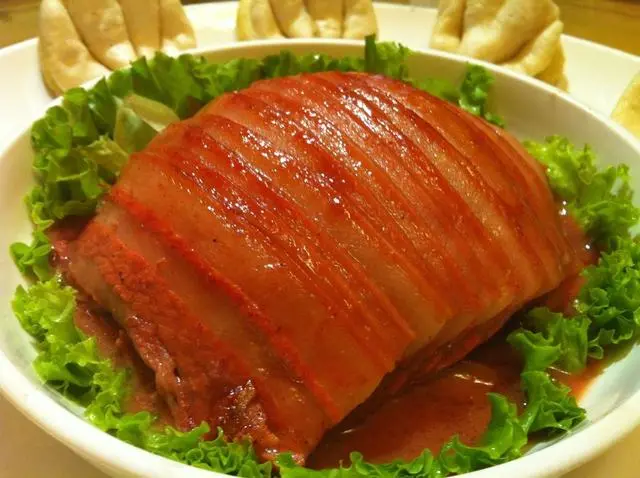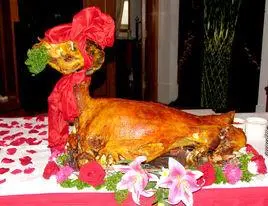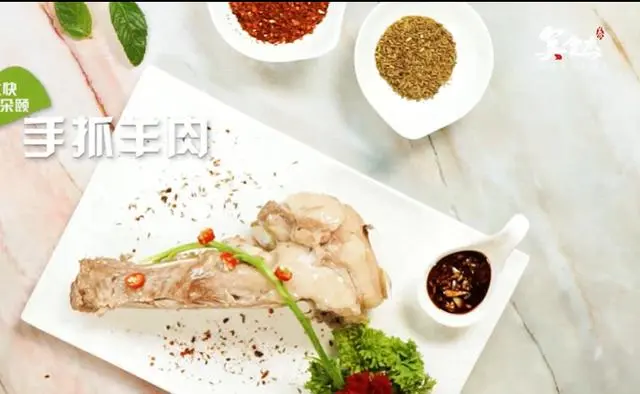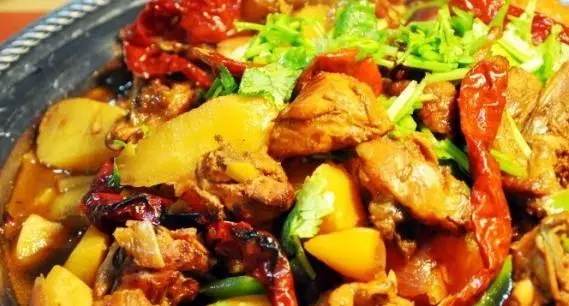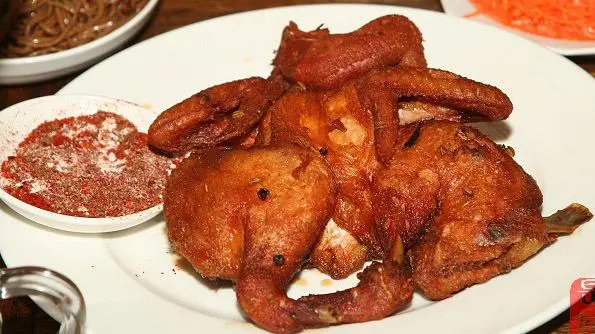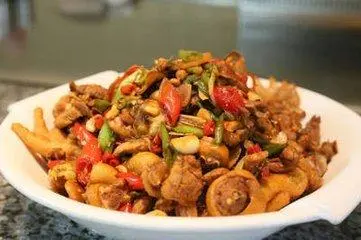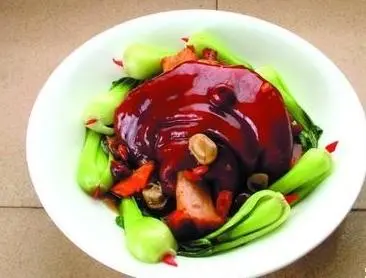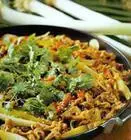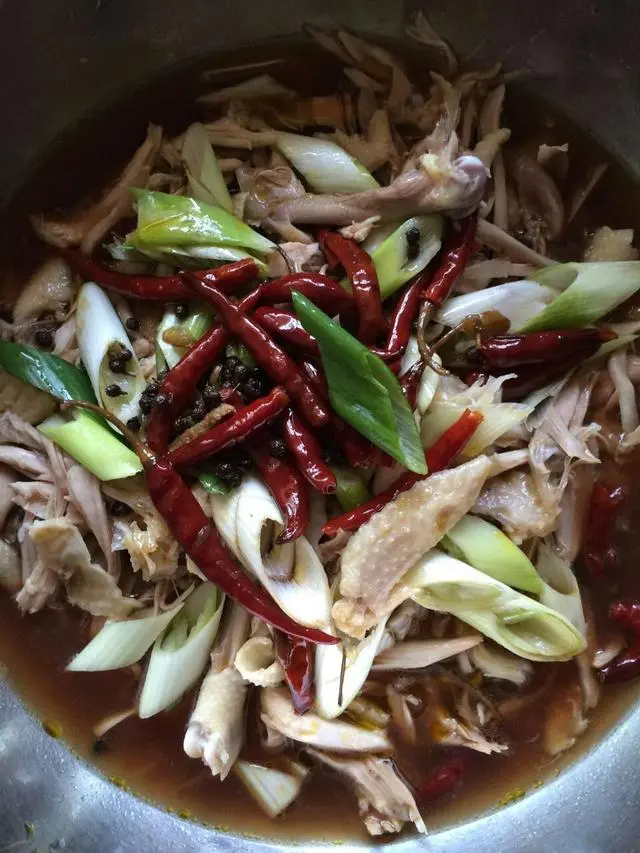- Main Ingredients & Cooking Method: Fresh lamb from the grassland is chosen, slaughtered, and then seasoned with onions, ginger, pepper, salt, and other spices. It’s then roasted whole.
- Flavor & Texture: This dish is crispy on the outside, tender on the inside with a golden hue, and has a rich, savory taste without being overly fatty.
- Cultural Significance: Originating from the nomadic cultures of the northwest, this dish is traditionally served to honor esteemed guests during grand celebrations. It represents the rich pastoral culture of the northwest and the warmth of its people.
- Popularity & Impact: The dish is popular in Xinjiang, Inner Mongolia, Qinghai, and Ningxia. As one of the hallmark dishes of Northwestern cuisine, it’s widely recognized and influential.
- Main Ingredients & Cooking Method: As the name suggests, this dish is traditionally eaten with hands and is made primarily from lamb meat, either roasted over charcoal or boiled.
- Flavor & Texture: It has a rich lamb flavor, is tender, and offers a mix of juicy and chewy textures.
- Cultural Significance: A traditional food favored by various ethnic groups in the northwest, this dish embodies the bold and hospitable spirit of the grassland people.
- Popularity & Impact: As a staple dish in the northwest, its popularity and influence spread across Xinjiang, Inner Mongolia, Qinghai, Ningxia, and Gansu.
- Main Ingredients & Cooking Method: This dish combines chicken and potatoes, usually served with Xinjiang-style bread or belt noodles. Seasonings include ginger, pepper, salt, MSG, and green onions.
- Flavor & Texture: Spicy and aromatic, the chicken is tender and potatoes soak up the flavorful sauce.
- Cultural Significance: Originating from road-side restaurants in Xinjiang in the 1980s, this dish has since become emblematic of Xinjiang cuisine. It showcases the region’s blend of multiple ethnic culinary traditions.
- Popularity & Impact: Widely beloved throughout Xinjiang and the rest of China.
- Main Ingredients & Cooking Method: This involves a meticulous process of boiling, steaming, and frying a chicken, resulting in a dish that’s golden and gourd-shaped.
- Flavor & Texture: Crispy skin and tender meat give this dish a unique flavor profile.
- Cultural Significance: Originating from the Tang Dynasty, this traditional Han dish from Xi’an, Shaanxi, is often dubbed “the number one flavor of Chang’an.”
- Popularity & Impact: Recognized as one of Shaanxi’s top dishes and a defining dish of the province.
- Main Ingredients & Cooking Method: Made primarily from lamb tendons, meatballs, chunks of meat, and potatoes. The dish is stewed to perfection.
- Flavor & Texture: A rich and savory taste with a combination of textures.
- Cultural Significance: Represents the culinary heritage of the Qinghai region and stands out as one of the northwest’s iconic dishes.
- Popularity & Impact: Highly renowned in Qinghai, it’s considered one of the province’s top dishes.
- Main Ingredients & Cooking Method: Made from the front leg of the pig, the dish goes through processes of boiling, steaming, and frying.
- Flavor & Texture: This dish is both fatty and lean, offering a harmonious blend of flavors.
- Cultural Significance: Originating from Shaanxi’s Dali, it represents the culinary traditions of the region and stands as a testament to Northwestern culinary prowess.
- Popularity & Impact: As a standout dish in Shaanxi, its reputation and influence are profound.
- Main Ingredients & Cooking Method: Made from the hind leg of lamb, mixed with cilantro, cumin, and green onions. It’s usually stir-fried to perfection.
- Flavor & Texture: The dish is spicy and tender with a distinct onion aroma.
- Cultural Significance: As a classic Xinjiang dish, it embodies the culinary traditions of the region.
- Popularity & Impact: Highly popular in Xinjiang and renowned throughout the country.
8. Braised Yellow River Catfish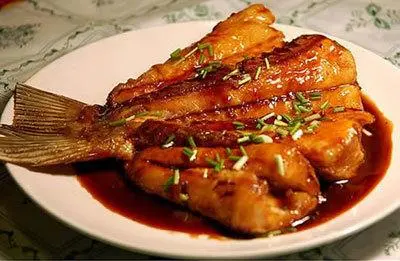
- Main Ingredients & Cooking Method: This dish uses catfish from the Yellow River in Ningxia, braised to perfection to bring out its rich flavor.
- Flavor & Texture: The dish is tender and has a delightful sweet and savory taste.
- Cultural Significance: Representing Ningxia’s culinary traditions, it’s a cherished dish of the region.
- Popularity & Impact: With high regard in Ningxia, it’s considered one of the province’s top dishes.
- Main Ingredients & Cooking Method: Using organic chicken as the primary ingredient, the dish incorporates various traditional spices, capturing the essence of cuisines from Sichuan, Chongqing, and Xinjiang.
- Flavor & Texture: The dish has a spicy and numbing flavor, crispy skin, and tender meat.
- Cultural Significance: Representing a fusion of various culinary traditions, it’s considered an intangible cultural heritage in Hutubi County.
- Popularity & Impact: As a distinctive dish in Xinjiang, it holds a prominent place in the regional cuisine.
- Main Ingredients & Cooking Method: Made from pork belly, jujube, and lees, the dish is steamed to a translucent consistency with a shiny, reddish-brown hue.
- Flavor & Texture: The dish is sweet and savory, with the meat melting in the mouth.
- Cultural Significance: As a specialty dish from Shaanxi, it embodies the culinary traditions of the region.
- Popularity & Impact: Revered in Shaanxi, it’s one of the province’s defining dishes.
This compilation showcases the rich culinary tapestry of Northwestern China, each dish telling a story of its own. Whether it’s the nomadic roots reflected in the Roasted Whole Lamb or the harmonious blend of cultures in the Big Plate Chicken, these dishes offer a flavorful journey through the region’s history and traditions.
